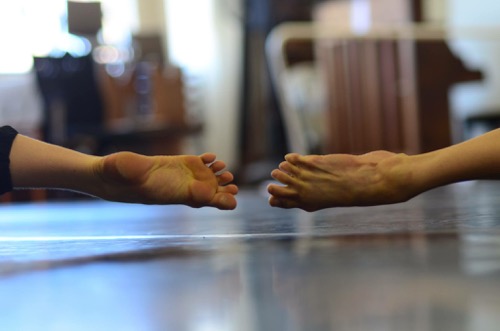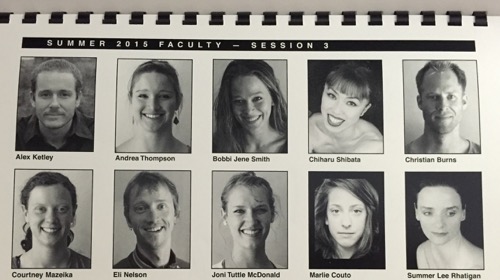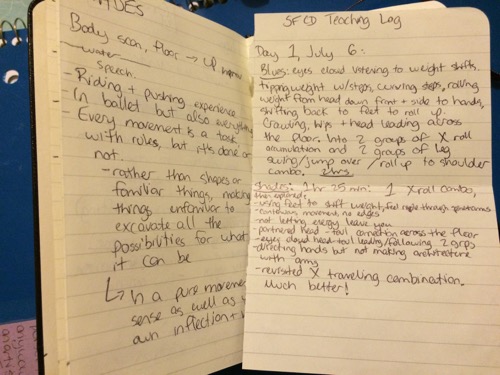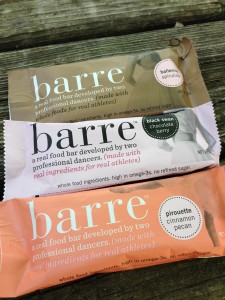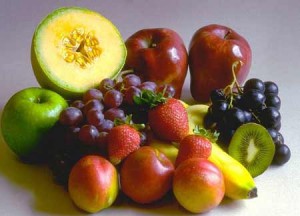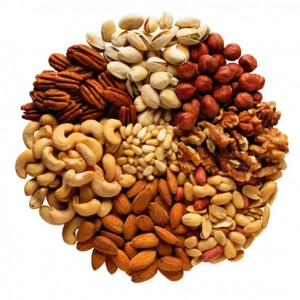by Andrea Thompson
For the past two summers, I have had the distinct pleasure and challenge of teaching in both Hubbard Street’s level III intensive and the San Francisco Conservatory of Dance’s summer program. This year I taught Hubbard Street 2 repertory in Chicago, aptly named “Andrea Class” in San Francisco, and ballet in both programs. Three summers ago, if anyone had asked me to teach I would have politely and very definitively declined. I didn’t feel ready. I didn’t feel that I was qualified to deliver information as if I were an expert when there was still so much for me to take in from my teachers and peers. After all, I felt, those who are designated as educators in this field should be both veterans of their subject matter and skilled orators, imparting tried-and-true wisdom to their earnest disciples. Though I had tried a lot of things, I hadn’t yet decided what my truths were. As it turns out, two years into my teaching journey I still haven’t, and every time I teach I seem to be amassing evidence that that’s not actually an essential element of it.
What is truth?
What I mean by “truth” is settling on a single approach based on years of building expertise in a particular movement vocabulary/philosophy. There’s certainly value in the long-term, deep study of one such language, just as there is value in having years of experience teaching. With experience come strategies for how to best communicate with and reach dancers of all age groups, skill levels, and dispositions. But in terms of class content and structure, I believe that there are infinite ways to go about challenging students to learn and grow and engage with dance. Personally, my relationship with it has been kept vibrant by the regular overhauling of the perspectives I’ve absorbed, since I have been lucky enough to come across new approaches to dance every few years of my career.
In the current climate of the contemporary genre it seems an urgent necessity to examine and utilize all the information I’ve engaged with, rather than decide that one system or movement language is more valid than another. It stands to reason that in order to stay relevant, delivering the multifarious ideas I like to employ requires a class structure that is fluid.
Reading the room
Needless to say this makes planning a little difficult. And as essential as planning is – more on that later – this summer I found that reading the room while teaching trumps nearly everything else in terms of importance. Depending on how the student-teacher interaction is going, handling the expectations of 30 trusting young dancers can feel like a huge responsibility – or a solo stand-up comedy show, a giant improv score, herding cats, accidentally going onstage naked, being lost in a foreign country, suddenly becoming an omnipotent wizard, a rock concert, or a psychological experiment in which the roles of subject and scientist are unclear.
It’s a constant conversation, and the same way that you would adjust your wording if you see you’re not getting your point across, or your listener is getting bored, you adjust your words or your physicality or your plan for the day in order to arrive at your point in class. On the other end of the spectrum, there’s this weird power of insistence that you have as a teacher that you might not use in polite conversation with a peer. I was surprised to find that sometimes, “try harder,” “stick with it,” and “just do it because I say so” were valid and effective demands that produced dramatic results. The beautiful simplicity of setting higher expectations in the room could be just as enabling of student improvement as wracking my brain for synonyms of the same idea and the resultant assumption that I, as a teacher, was failing to articulate what was needed.
But regardless of my ambitions for the environment I wanted to create and the growth I wanted to facilitate, this summer with Andrea Class I had to come up with the “what” of the class as well as the “how.” Most of my plans for Andrea Class began with an objective: a larger idea about dance or performance I wanted to explore, or a result I wanted to curate for the students, i.e. a feeling of freedom, the joy of digging into effort, or mastering some ubiquitous elements of floorwork. I compiled exercises that lent themselves to that end, mixing things I’d done before with new games and improv tasks. Next came playlist planning, since I have yet to find a streaming service whose musical tastes match my own. Occasionally I made a phrase to provide context for the research and highlight movement pathways I felt would be beneficial to work on.
The “plan-n-scrap method”
After all that, most of my Andrea Classes played out thusly: armed with ideas and music, I would begin, and within a few minutes of moving around together surveying my surroundings, realize the majority of my planning was useless. I had picked the wrong theme of the day, or there was something else lacking in the atmosphere that needed to be addressed. I once played an improv game called “what the room needs,” and never has there been a better time to use it than while teaching, even if I’m the only one playing. After a handful of unsuccessful-feeling classes in which I stuck rigidly to my curriculum, I started applying that idea to my teaching and consequently scrapped most of my plans. I began to trust that my own experiences as a professional dancer (and not-too-distant student) would work together with my instincts and empathy to steer the spontaneous class structure. I tried to dance as much as possible in my classes so I could feel what I was asking of my students, and I found that my physical participation was often a better indicator of what needed to happen next than what I could divine from the front of the room. My dancing was also, I found out, much more effective than words in helping people figure out unfamiliar pathways in floorwork.
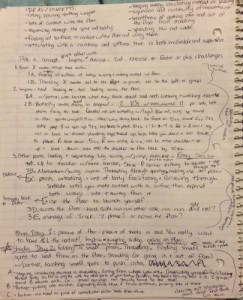 This plan-n-scrap method is evidenced in the hilarious log I kept of my Andrea Class teaching. In it I wrote my idea for each class followed by what actually happened when I got in there. I always started with a plan, and what I discerned was that my brain needed to go through the steps of making it in order to kickstart itself into curious-leader mode. Inevitably by the time class began my thoughts would be miles down the road from where they started, but my cranial engine did not rev up properly unless I truly applied myself to planning. My own class-taking within the Conservatory’s summer program also sparked ideas about what does and doesn’t work in dance education, and what my optimal role might be within the existing structure of it. Some of my reflections emerged days later while teaching, having stewed subconsciously until the right opportunity presented itself. Another advantage to all the planning was that I knew if I ever choked, I had not just a plan B written down, but C, D, E, and F to choose from.
This plan-n-scrap method is evidenced in the hilarious log I kept of my Andrea Class teaching. In it I wrote my idea for each class followed by what actually happened when I got in there. I always started with a plan, and what I discerned was that my brain needed to go through the steps of making it in order to kickstart itself into curious-leader mode. Inevitably by the time class began my thoughts would be miles down the road from where they started, but my cranial engine did not rev up properly unless I truly applied myself to planning. My own class-taking within the Conservatory’s summer program also sparked ideas about what does and doesn’t work in dance education, and what my optimal role might be within the existing structure of it. Some of my reflections emerged days later while teaching, having stewed subconsciously until the right opportunity presented itself. Another advantage to all the planning was that I knew if I ever choked, I had not just a plan B written down, but C, D, E, and F to choose from.
At SFCD I had the luxury of working consistently with the same group of people over the course of four weeks. We got to know each other, trust each other, sweat together, grow together. I haven’t taught any “Andrea Classes” outside of that program, but I’m now very interested in continuing to explore my teaching voice as an ongoing aspect of my development within this field.
I almost wrote “find” my teaching voice, but I have a feeling that for as long as I continue to teach, I will never fully pin down my approach to dance or dance pedagogy as an absolute. It feels like the discoveries I made about myself as a teacher this summer have already begun to influence my own dancing, and have set the course for my approach to shift once again.
I once heard the brilliant ex-Forsythe dancer Christopher Roman confide to a teaching colleague, “I’m always changing my mind. I can’t do one thing today and expect it to still feel right tomorrow, but if it was right for that moment then it was the right thing.” So it went with my Andrea Classes this summer, and so it goes with my Andrea Teaching. Having moved past the fear of unpreparedness from three years ago, I’m now looking forward to charting the unknown seas ahead.
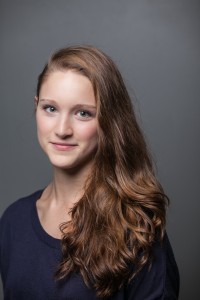 Contributor Andrea Thompson trained at the American Ballet Theatre’s Jacqueline Kennedy Onassis School, the Ailey School, and the San Francisco Conservatory of Dance. Those schools and programs with Springboard Danse Montréal, Nederlands Dans Theater and Batsheva Dance Company brought opportunities to perform works by William Forsythe, Ohad Naharin, Alex Ketley, Christian Burns, Marina Mascarell Martinez, Gregory Dolbashian, Idan Sharabi, Danielle Russo, and Robyn Mineko Williams.
Contributor Andrea Thompson trained at the American Ballet Theatre’s Jacqueline Kennedy Onassis School, the Ailey School, and the San Francisco Conservatory of Dance. Those schools and programs with Springboard Danse Montréal, Nederlands Dans Theater and Batsheva Dance Company brought opportunities to perform works by William Forsythe, Ohad Naharin, Alex Ketley, Christian Burns, Marina Mascarell Martinez, Gregory Dolbashian, Idan Sharabi, Danielle Russo, and Robyn Mineko Williams.
Professionally, Andrea has danced with the Foundry, Zhukov Dance Theatre, and LoudHoundMovement. Most recently she danced with Hubbard Street 2, where she performed works by Loni Landon, Alex Soares, Alejandro Cerrudo, Ihsan Rustem, Bryan Arias, and Victor A. Ramirez. She joined Shen Wei Dance Arts this spring.





